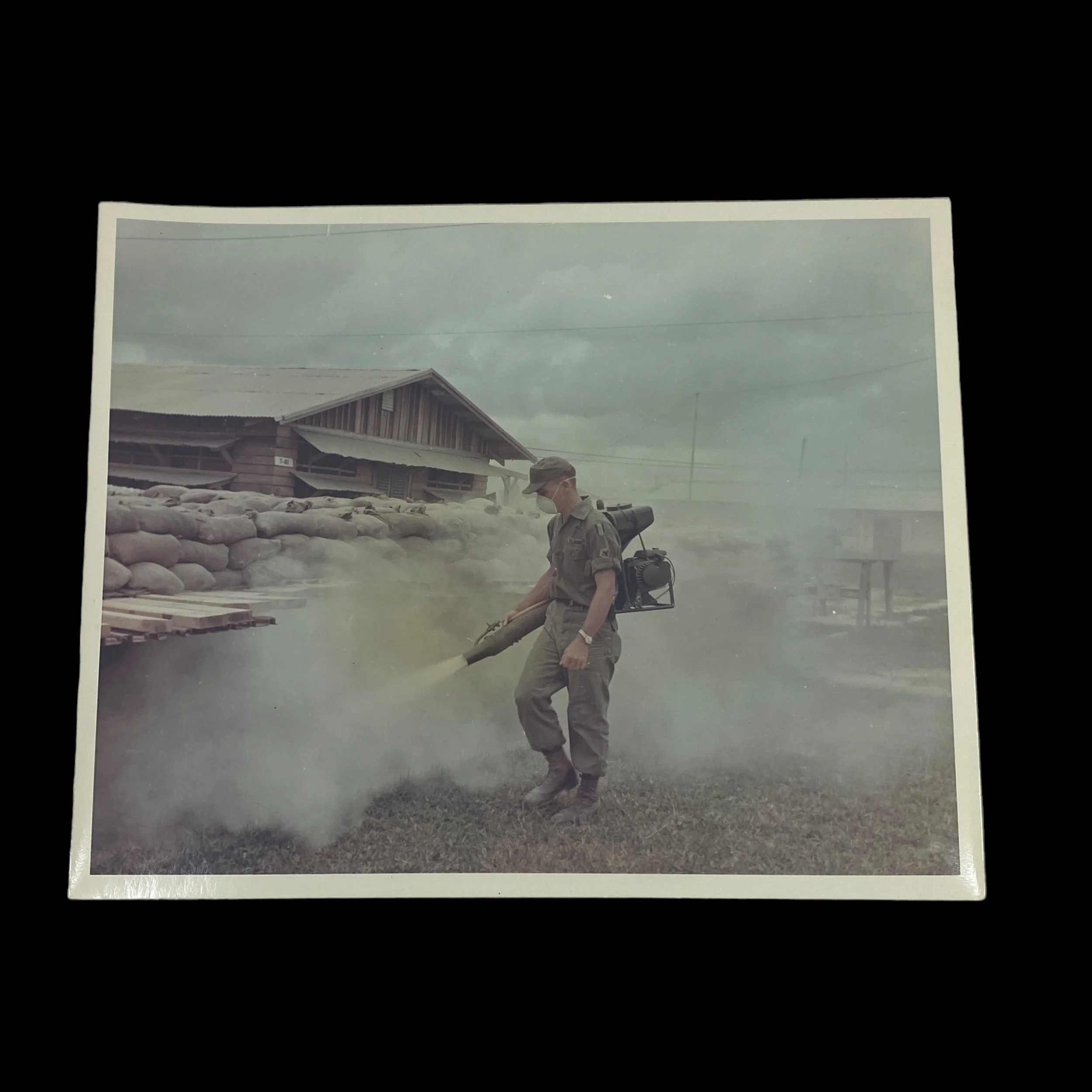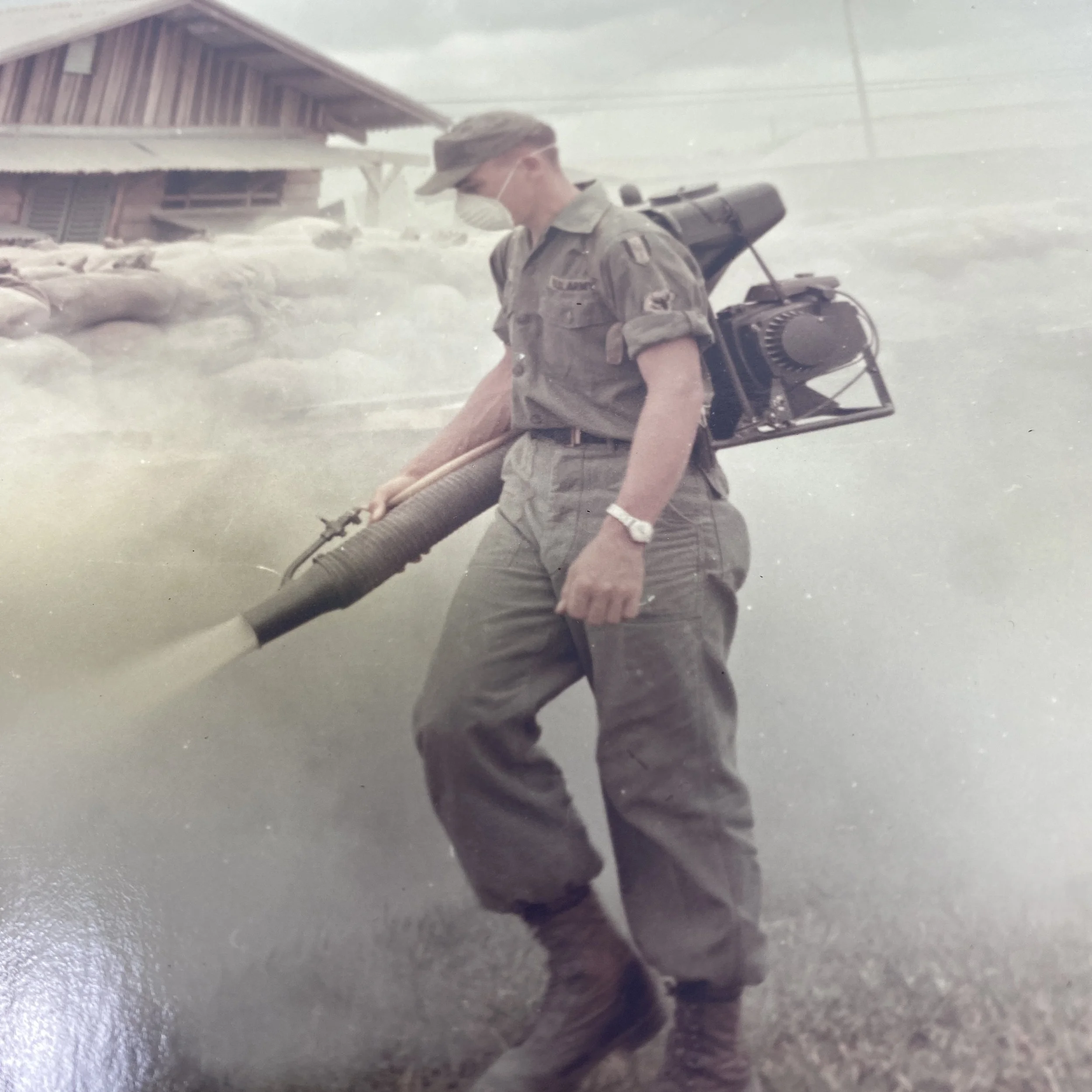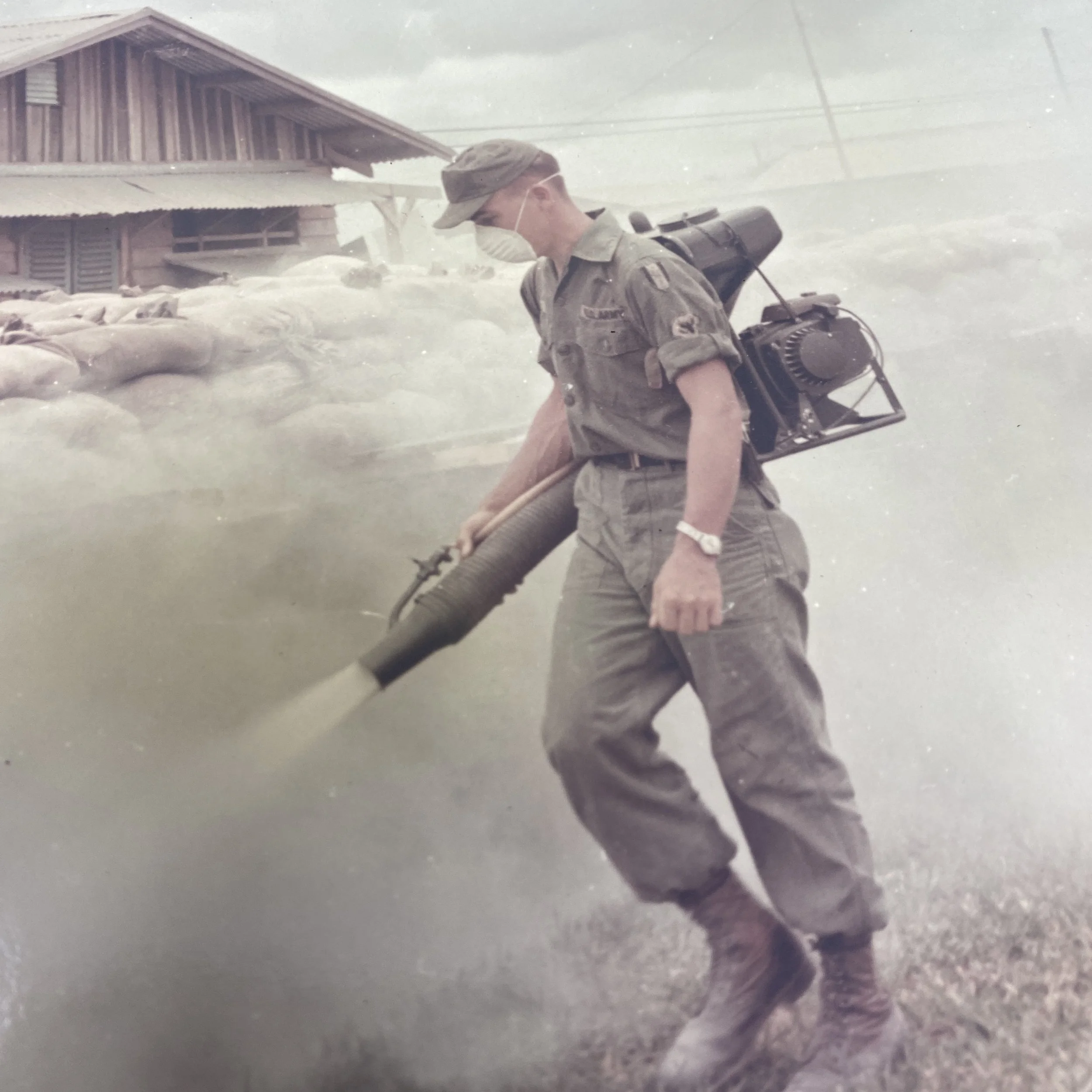VERY RARE! 1966 "Bein Hoa" Vietnam 20th Preventative Medicine Unit "poison spray" TYPE ONE Original U.S. Army's Photograph Signal Corps Combat Photograph*












VERY RARE! 1966 "Bein Hoa" Vietnam 20th Preventative Medicine Unit "poison spray" TYPE ONE Original U.S. Army's Photograph Signal Corps Combat Photograph*
Comes with a hand-signed C.O.A.
Size: 8 x 10 inches
This original and museum-grade Vietnam War is an extremely rare 1966 dated TYPE ONE Defense Department (U.S. Army's Photograph Signal Corps) combat photograph.
One of the primary functions of the Photograph Signal Corps during the Vietnam War was to document combat operations. Embedded with military units across Vietnam, photographers captured intense firefights, helicopter assaults, and the daily struggles of soldiers in the field. These images provided a visceral depiction of the war's brutality and the challenges faced by American troops fighting in unfamiliar terrain against a determined enemy. Beyond documenting combat, the Photograph Signal Corps also sought to humanize the soldiers serving in Vietnam. Through candid portraits and slice-of-life photographs, photographers portrayed the camaraderie, resilience, and humanity of American troops amidst the chaos of war. These images served to counterbalance the dehumanizing effects of war and remind viewers of the individuals behind the uniforms.
Type One photographs are very rare as they are the first high-gloss prints from original combat negative camera images and contain the original marker stamps on the backside noting the photography information. Original government/U.S. Army Vietnam War combat Defense Department photographs are very rare and rarely come to the public sector.
On the backside of the TYPE ONE combat photograph, it notes “In this never-ending war on rats, the 20th Preventative Medicine Unit at Bein Hoa, uses a variety of sprays to kill the disease-carrying animals. Here SP4 Frederick E. Uhl uses a poison spray to read an area of rat fleas, and other vectors.”
Capturing History: The Role of the US Army's Photograph Signal Corps during the Vietnam War
The Vietnam War was one of the most tumultuous and divisive conflicts in American history, spanning from 1955 to 1975. Throughout this period, the United States Army's Photograph Signal Corps played a crucial role in documenting the war's events, providing a visual narrative that shaped public perception both at home and abroad.
Establishing the Photograph Signal Corps:
The US Army's Photograph Signal Corps traces its roots back to the Civil War when photographers such as Mathew Brady and Alexander Gardner documented the conflict's brutality and human toll. During World War II, the Signal Corps expanded its role to include motion pictures and aerial photography, recognizing the importance of visual media in warfare. By the time the Vietnam War began, the Photograph Signal Corps was a well-established unit equipped with advanced cameras, film processing facilities, and skilled photographers.
Documenting Combat:
One of the primary functions of the Photograph Signal Corps during the Vietnam War was to document combat operations. Embedded with military units across Vietnam, photographers captured intense firefights, helicopter assaults, and the daily struggles of soldiers in the field. These images provided a visceral depiction of the war's brutality and the challenges faced by American troops fighting in unfamiliar terrain against a determined enemy.
Among the most iconic images of the war are those captured by Photograph Signal Corps photographers. Larry Burrows' haunting photograph of wounded Marines during the Battle of Hill 484 and Eddie Adams' shocking image of a South Vietnamese police chief executing a Viet Cong suspect are just a few examples of the powerful imagery that emerged from the conflict. These photographs not only brought the reality of war into the living rooms of American households but also influenced public opinion and policy decisions regarding US involvement in Vietnam.
Humanizing the Soldier:
Beyond documenting combat, the Photograph Signal Corps also sought to humanize the soldiers serving in Vietnam. Through candid portraits and slice-of-life photographs, photographers portrayed the camaraderie, resilience, and humanity of American troops amidst the chaos of war. These images served to counterbalance the dehumanizing effects of war and remind viewers of the individuals behind the uniforms.
Moreover, the Photograph Signal Corps captured the diverse experiences of soldiers serving in Vietnam. From the boredom of base camp life to the moments of camaraderie shared during downtime, these photographs offered a more nuanced understanding of the soldier's experience. By showcasing the humanity of those serving in Vietnam, the Photograph Signal Corps played a vital role in bridging the gap between the military and civilian populations.
Documenting the Impact on Civilians:
In addition to documenting the experiences of American troops, the Photograph Signal Corps also captured the impact of the war on Vietnamese civilians. Photographers documented the devastation caused by bombing raids, the displacement of civilians due to the conflict, and the daily struggles of ordinary Vietnamese caught in the crossfire. These images provided a stark contrast to the narrative of liberation and democracy promoted by US officials, highlighting the human cost of war for the Vietnamese people.
One of the most notable examples of this documentation is Nick Ut's Pulitzer Prize-winning photograph of Kim Phuc, a young Vietnamese girl running naked and screaming from a napalm attack. This image, which captured the horrors of war and the innocence of its victims, became a symbol of the human toll of the Vietnam War and helped galvanize anti-war sentiment around the world.
Legacy and Conclusion:
The US Army's Photograph Signal Corps played a vital role in shaping the public's understanding of the Vietnam War. Through their powerful imagery, photographers captured the realities of combat, humanized the soldiers serving in Vietnam, and documented the impact of the war on Vietnamese civilians. Despite the challenges and dangers they faced, these photographers remained committed to their mission of documenting history and ensuring that the sacrifices made during the Vietnam War would not be forgotten. Today, their photographs serve as a lasting reminder of the human cost of war and the importance of bearing witness to history.